
Deadwood is a city that serves as county seat of Lawrence County, South Dakota, United States. It was named by early settlers after the dead trees found in its gulch. The city had its heyday from 1876 to 1879, after gold deposits had been discovered there, leading to the Black Hills Gold Rush. At its height, the city had a population of 25,000, attracting Old West figures such as Wyatt Earp, Calamity Jane, and Wild Bill Hickok.

James Butler Hickok, better known as "Wild Bill" Hickok, was a folk hero of the American Old West known for his life on the frontier as a soldier, scout, lawman, cattle rustler, gunslinger, gambler, showman, and actor, and for his involvement in many famous gunfights. He earned a great deal of notoriety in his own time, much of it bolstered by the many outlandish and often fabricated tales he told about himself. Some contemporaneous reports of his exploits are known to be fictitious, but they remain the basis of much of his fame and reputation.
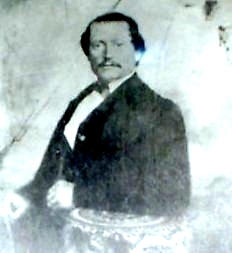
John McCall ;, also known as "Crooked Nose" or "Broken Nose Jack", was the murderer of Old West legend Wild Bill Hickok. McCall shot Hickok from behind as he played poker at Nuttal & Mann's Saloon in Deadwood, Dakota Territory, on August 2, 1876. McCall was executed for the murder on March 1, 1877.

The makeup of poker's dead man's hand has varied through the years. Currently, it is described as a two-pair poker hand consisting of the black aces and black eights. The pair of aces and eights, along with an unknown hole card, were reportedly held by Old West folk hero, lawman, and gunfighter Wild Bill Hickok when he was murdered while playing a game. No contemporaneous source, however, records the exact cards he held when killed. Author Frank Wilstach's 1926 book, Wild Bill Hickok: The Prince of Pistoleers, led to the popular modern held conception of the poker hand's contents.

Little Big Man is a 1970 American Western film directed by Arthur Penn and based on the 1964 novel Little Big Man by Thomas Berger. While broadly categorized as a western, or an epic, the film encompasses several literary/film genres, including comedy, drama and adventure. The film follows the life of a white man who was raised by members of the Cheyenne nation during the 19th century and then attempts to reintegrate with American pioneer society. The film is a parody of the Western film genre, contrasting the lives of white settlers and Native Americans throughout the progression of the boy's life. It stars Dustin Hoffman, Chief Dan George, Faye Dunaway, Martin Balsam, Jeff Corey and Richard Mulligan.

Calamity Jane is a 1953 American Technicolor Western musical film starring Doris Day and Howard Keel, and directed by David Butler. The musical numbers were staged and directed by Jack Donohue, who a year later would direct the Day musical, Lucky Me (1954). The film is loosely based on the life of Wild West heroine Calamity Jane and explores an alleged romance between her and Wild Bill Hickok.
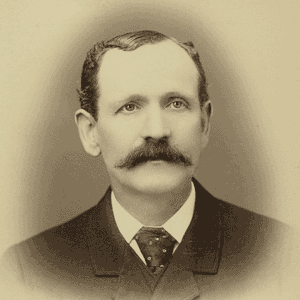
Solomon Star was a Jewish American businessman and politician notable as an early resident of the town of Deadwood, South Dakota.
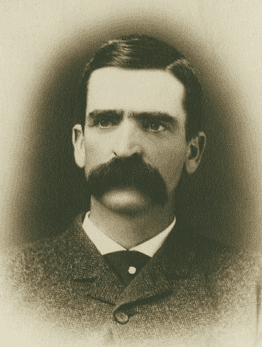
Seth Bullock was a Canadian American frontiersman, business proprietor, politician, sheriff, and U.S. Marshal. He was a prominent citizen in Deadwood, South Dakota, where he lived from 1876 until his death, operating a hardware store and later a large hotel, the Bullock Hotel.

Charles H. "Colorado Charlie" Utter was a figure of the American Wild West, best known as a great friend and companion of Wild Bill Hickok. He was also friends with Calamity Jane.

The Gem Theater was a saloon in Deadwood, South Dakota, owned by Al Swearengen.
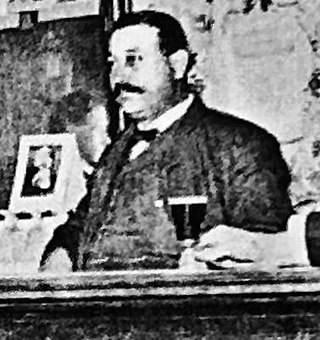
Ellis Alfred Swearengen was an American pimp and entertainment entrepreneur who ran the Gem Theater, a notorious brothel, in Deadwood, South Dakota, for 22 years during the late 19th century.

The Reverend Henry Weston Smith was an American preacher and early resident of Deadwood, South Dakota.
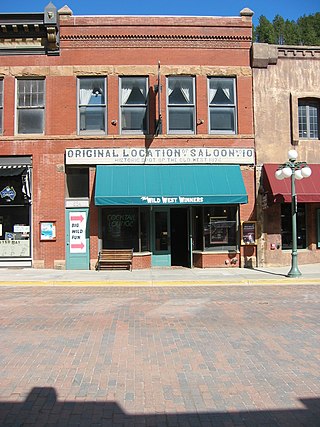
Nuttal & Mann's was a saloon located in Deadwood, southern Dakota Territory. It was noted for being the death-place of James Butler "Wild Bill" Hickok. It was later renamed the "No. 10 Saloon". The current No. 10 Saloon is not at the same location as the original Nuttal & Mann's.

The Plainsman is a 1936 American Western film directed by Cecil B. DeMille and starring Gary Cooper and Jean Arthur. The film presents a highly fictionalized account of the adventures and relationships between Wild Bill Hickok, Calamity Jane, Buffalo Bill Cody, and General George Custer, with a gun-runner named Lattimer as the main villain. The film is notorious for mixing timelines and even has an opening scene with Abraham Lincoln setting the stage for Hickok's adventures. Anthony Quinn has an early acting role as an Indian. A remake using the same title was released in 1966.

A Western saloon is a kind of bar particular to the Old West. Saloons served customers such as fur trappers, cowboys, soldiers, lumberjacks, businessmen, lawmen, outlaws, miners, and gamblers. A saloon might also be known as a "watering trough, bughouse, shebang, cantina, grogshop, and gin mill". The first saloon was established at Brown's Hole, Wyoming, in 1822, to serve fur trappers.

John Sewell "Jack" Langrishe, popularly known as the "Comedian of the Frontier", was an Irish-American actor and impresario who travelled extensively throughout the American West and later in life became one of the first State Senators of Idaho.
Kitty Leroy was a dancer, gambler, saloon owner, prostitute, madam, and trick shooter of the American Old West.

Martha Jane Canary, better known as Calamity Jane, was an American frontierswoman, sharpshooter, and storyteller. In addition to many exploits she was known for being an acquaintance of Wild Bill Hickok. Late in her life, she appeared in Buffalo Bill's Wild West show and at the 1901 Pan-American Exposition. She is said to have exhibited compassion to others, especially to the sick and needy. This facet of her character contrasted with her daredevil ways and helped to make her a noted frontier figure. She was also known for her habit of wearing men's attire.
"Deadwood" is the first episode of the first season of the HBO original series of the same name. The episode was written by David Milch and directed by Walter Hill. It first aired on March 21, 2004.

John J. Manning was an Irish American frontiersman, lawman, gold prospector, rancher and saloon owner in the American West during the latter part of the 19th century. He was a prominent citizen in Deadwood, South Dakota from his arrival in 1876 to his death. Manning was the first elected sheriff of Lawrence County, Dakota Territory which included Deadwood. He served several terms as sheriff, as well as operated saloons, several livery stables, and a cattle & horse ranch in nearby Belle Fourche in South Dakota.



















